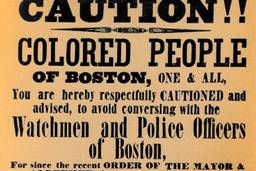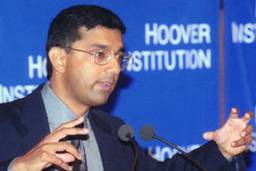A CAP Analyst’s Red-Baiting Book Accidentally Makes the Case for Socialism
Warren advisor Ganesh Sitaraman and Yale Law School professor Anne L. Alstott bend over backward to fix capitalism. And prove they can’t.
Phyllis Eckhaus

To experience socialism is akin to being slowly boiled alive — so awful, our protective instincts would kick in to help us escape before its dangers overtook us.
Or so The Public Option: How to Expand Freedom, Increase Opportunity and Promote Equality tells us. Co-authors Ganesh Sitaraman and Anne L. Alstott present this book as an unblinkered analysis of how we might guide public policy toward greater equality in the presumptively Trump-free years ahead. Intended to jumpstart “a national conversation about what we owe each other,” the book defines and defends the concept of the “public option,” explores past and current examples, and proposes new possibilities, from childcare to retirement savings to higher ed and beyond. The book shines an important spotlight on the benefits that government-controlled programs can provide for the general public. And yet, the authors offer a red-baiting dismissal of socialism so outrageous it’s almost funny. Sitaraman and Alstott define a public option as a program that “guarantees access to important services at a controlled price” and “coexists (or could co-exist) with private provision of the same service.” The U.S. Postal Service, for instance, “provides mail service to everyone at a reasonable price, and it covers even remote (and urban) areas that private firms shun.” They emphasize, however, that their goal is not to challenge capitalism but “to improve markets in cases where they aren’t competitive or are founded on toxic inequality.”
It’s encouraging that public options are being discussed on the Left as a potential solution to economic inequality, especially in the lead-up to the 2020 presidential election. But, as the healthcare debate highlights, there is fierce tension within the Democratic Party about whether the government should offer a public option within an otherwise privatized market (advocated by centrists such as Joe Biden) or do away with private options altogether in favor of universal programs like Medicare for All (a plan Sen. Bernie Sanders has openly called “democratic socialism”). The fact that the centrist Democratic position is a public option marks a significant shift to the left in the party’s politics — in 2009, a push to include a public option in Obamacare failed—but supporters of Medicare for All argue that private options perpetuate inequality because private corporations will always prioritize profits over the well-being of people.
The liberal Center for American Progress (CAP), a policy institute closely allied with the center-liberal Democratic establishment, has been a flashpoint for intraparty debates, and healthcare is no exception. Rather than supporting Medicare for All, CAP strongly favors a plan called Medicare Extra, which would create a public option while maintaining private insurance. It’s worth noting that Sitaraman is a senior fellow at CAP. He is also a former policy director for (and now “longtime advisor” to) presidential candidate Sen. Elizabeth Warren (D-Mass.), who wavered between a public option and single-payer before unequivocally signing on to Sanders’ Medicare for All plan in June. Sitaraman’s role on Warren’s campaign has raised concern among progressives about her commitment to left principles — as has her proclamation that she is a capitalist.
Enter The Public Option, which could be seen as a shot across the bow by centrist Democrats who want to embrace the role of government while swearing off socialism. Sitaraman and Alstott assure readers that, contrary to urban myth,
Frogs, like people, are completely capable of telling the difference between cold, warm and boiling water. And when the water gets too hot, frogs jump out. Public options aren’t designed to be socialism, and if they’re starting to become socialistic — or if someone proposes socialism under the guise of public options — everyone will be able to tell the difference, and then jump out.
It’s particularly galling that The Public Option disregards socialism with this rhetorical sleight-of-hand, given how the book never actually defines the bugaboo of socialism. Arguably, “socialism” is like “democracy” — a term defined by its advocates more as a direction and aspiration than as a simple program. While there’s no soundbite-friendly definition — not in Jacobin’s eloquent but lengthy socialist primer nor the Democratic Socialists of America platform—socialism, as understood by its friends and foes alike, runs counter to capitalism, with the goal of minimizing corporate and elite economic and political power.
As a central part of their argument, Sitaraman and Alstott wax rhapsodic about government-supported programs that have historically promoted public welfare by offering free or low-cost services: libraries, land-grant colleges, 30-year fixed mortgages, Social Security, Medicare. From their book’s first paragraph:
We stop by the local post office to mail a letter, without reflecting on the public support that makes it possible to send that letter anywhere in the country for less than a dollar. We drop our kids at the public school and take the subway, train or highway to work. Many of us have attended state universities, and many more have vacationed at a national park or cooled off at a public swimming pool. And we count on Social Security and Medicare to provide security for us after we retire.
Bernie Sanders calls such government offerings “socialism”; Sitaraman and Alstott call them “public options.” Sanders is correct. Though there may be private options available — e.g., public libraries versus bookstores — these public programs were not designed with that competition in mind. In keeping with socialism, they exist separate from and outside the private market, intended simply to serve the public good.
And yet The Public Option bends over backward to avoid the dastardly taint of socialism. Whether this verbal runaround is intended to win over moderates isn’t clear, but what does become clear is that the authors, almost despite themselves, have faith in the market. They hope their proposed public options will drive the worst players in the private sector out of business.
As friends of capitalism, Sitaraman and Alstott insist they don’t want to kill the beast, just tame it. Yet in their eagerness to win converts across the political spectrum, they mislead. They count Social Security and Medicare as much-beloved public “options” — optional only because the devout, self-employed Amish can legally opt out. Bizarrely, they also tout Medicare for All as a public option, even though that slogan typically signifies Sanders’ universal single-payer plan without private insurers.
If Social Security and Medicare (and potentially Medicare for All) succeed, it’s because they are not optional; they are essentially mandatory. The privileged cannot simply opt out of paying. These huge programs have correspondingly huge clout and constituency, which allows them to protect the most vulnerable. Importantly, these programs are not run by private corporations, which profit at the expense of others.
Indeed, there is tacit tension between “public” and “option.” Make a program optional, and the public interest is often undermined; the “option” ends up absorbing the more expensive or risky clients rejected by the private sector, raising the public cost while decreasing its quality. Without mandatory universal healthcare coverage to spread the risk among the well and the sick, and to give the government clout to set price controls, the people with chronic health conditions and disabilities get denied coverage because they pose too high a “risk” to private insurers’ profits. This implicit understanding informs the requirement for everyone to be held responsible for paying into Medicare and Medicaid.
Consider charter schools, which raise a host of problems. Even “good” charter schools cause systemic harm: Charters relegate the hardest-to-teach students to the public schools while draining those same schools of resources. The most vulnerable students are made more so. Indeed, though not mentioned in the book, charters actually re-segregated Delaware’s public schools, which had previously achieved remarkable success at desegregation. “Elite” charter school admission prerequisites kept poor Black and Latinx children out.
Private options exacerbate inequality, both by preserving exploitative jobs that could instead be well-paying public jobs, and by drawing consumers away from the public options, thereby draining public resources. Look at the private options competing with public transportation: services like Uber and Lyft. Sitaraman and Alstott cite Uber as exemplifying the “gig economy” — companies that don’t provide their workers with benefits. Ride-hail drivers are among the many who could benefit from generous government-sponsored public options in healthcare and retirement, the authors note. But ride-hail services also drain fares from the public transit system, leading to less funding and higher overall costs for consumers, who are then driven to use the private services. And since the business model for Uber and Lyft is geared toward an eventual shift to driverless cars, these companies are actively invested in replacing workers with robots.
To scrutinize the private option is to see the malevolence of capitalism hiding in plain sight. It’s telling that the authors devote a full chapter to fleshing out a “public option” proposal for childcare, and that their proposal is entirely government-operated. Childcare, they assert, is “too important to be left to the high cost and uncertain quality that the private market provides.” Surely, this caution is appropriate to virtually all services basic to a decent life: schooling, healthcare, retirement benefits, eldercare — the list goes on. All of these are vital to our survival. They are all too important to have the private sector screw them up.
It’s human and especially American to want choices. But some choices are scams, dangerous to the public welfare. Private corporations run misleading marketing campaigns, their allegiance not to consumers nor the public, but to their shareholders. Meanwhile, consumers flounder, unable to navigate complex choices in a way that ultimately helps the public good, or even their own good.
Sitaraman and Alstott have opted to promote a “we’re all in this together” vision that emphasizes the power of government to advance the common good. They clearly believe that Western European-style social welfare programs are possible for the United States, just so long as they’re sold as “choices” that will not lead to wrenching upheaval or structural change. Their kumbaya sales pitch has feel-good appeal.
So, yes, let’s re-envision government as an appropriate source of crucial, life-affirming social programs. But maybe we’re not all in this together. Maybe our corporate overlords are perfectly prepared to subvert the public welfare for their own personal gain. And maybe wrenching upheaval looms ahead as climate change roils the planet, bringing even greater power to the rich and misery to the poor. If that’s the future, we’ll want to know all our options. And maybe opt for socialism.







